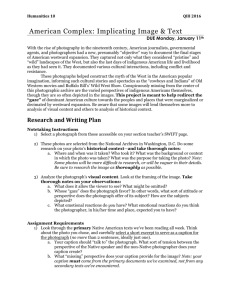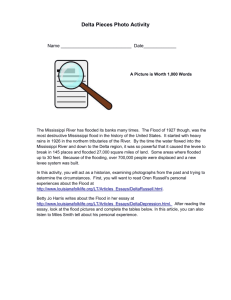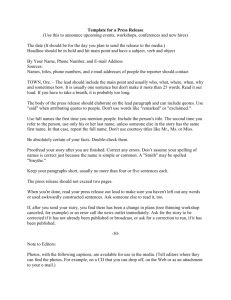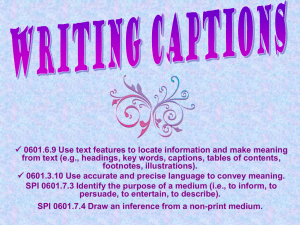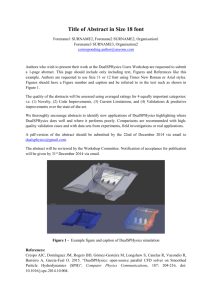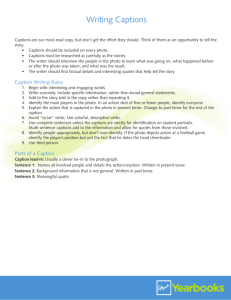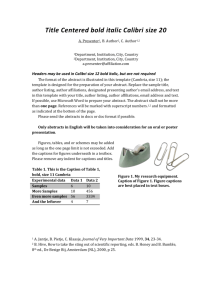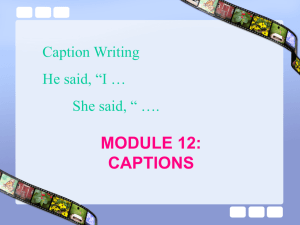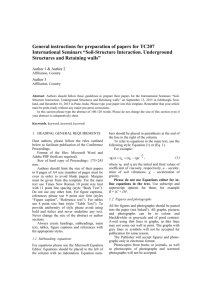A Picture is Worth 2-3
advertisement
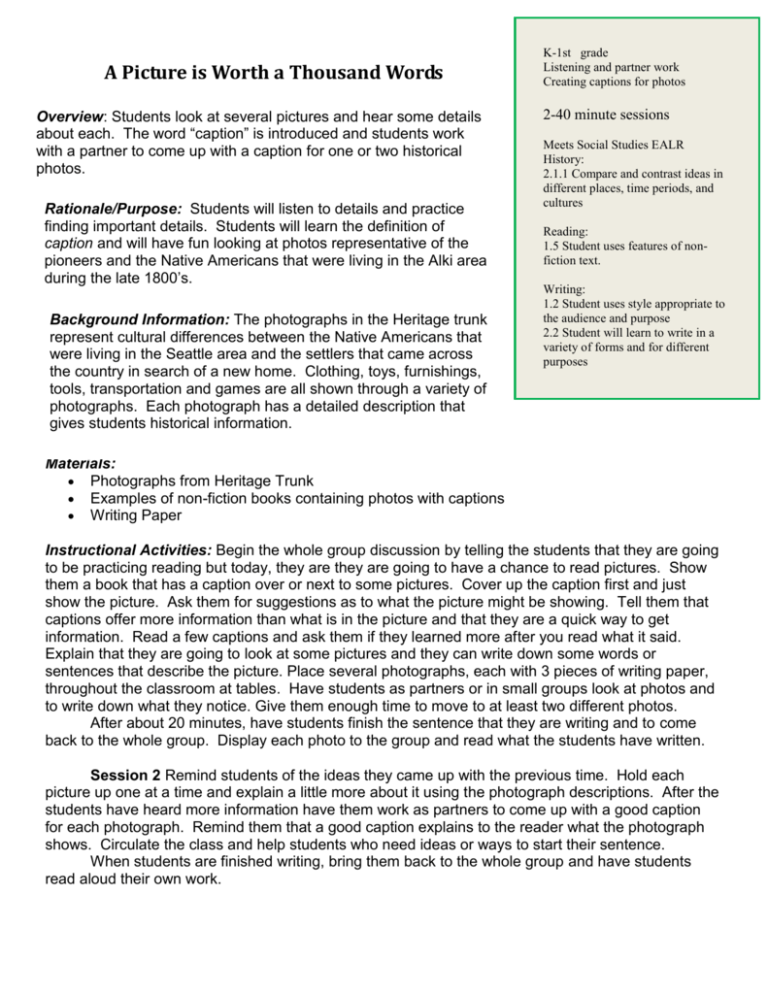
A Picture is Worth a Thousand Words Overview: Students look at several pictures and hear some details about each. The word “caption” is introduced and students work with a partner to come up with a caption for one or two historical Context/Rationale photos. Rationale/Purpose: Students will listen to details and practice finding important details. Students will learn the definition of caption and will have fun looking at photos representative of the pioneers and the Native Americans that were living in the Alki area during the late 1800’s. Background Information: The photographs in the Heritage trunk represent cultural differences between the Native Americans that were living in the Seattle area and the settlers that came across the country in search of a new home. Clothing, toys, furnishings, tools, transportation and games are all shown through a variety of photographs. Each photograph has a detailed description that gives students historical information. K-1st grade Listening and partner work Creating captions for photos 2-40 minute sessions Meets Social Studies EALR History: 2.1.1 Compare and contrast ideas in different places, time periods, and cultures Reading: 1.5 Student uses features of nonfiction text. Writing: 1.2 Student uses style appropriate to the audience and purpose 2.2 Student will learn to write in a variety of forms and for different purposes Materials: Photographs from Heritage Trunk Examples of non-fiction books containing photos with captions Writing Paper Instructional Activities: Begin the whole group discussion by telling the students that they are going to be practicing reading but today, they are they are going to have a chance to read pictures. Show them a book that has a caption over or next to some pictures. Cover up the caption first and just show the picture. Ask them for suggestions as to what the picture might be showing. Tell them that captions offer more information than what is in the picture and that they are a quick way to get information. Read a few captions and ask them if they learned more after you read what it said. Explain that they are going to look at some pictures and they can write down some words or sentences that describe the picture. Place several photographs, each with 3 pieces of writing paper, throughout the classroom at tables. Have students as partners or in small groups look at photos and to write down what they notice. Give them enough time to move to at least two different photos. After about 20 minutes, have students finish the sentence that they are writing and to come back to the whole group. Display each photo to the group and read what the students have written. Session 2 Remind students of the ideas they came up with the previous time. Hold each picture up one at a time and explain a little more about it using the photograph descriptions. After the students have heard more information have them work as partners to come up with a good caption for each photograph. Remind them that a good caption explains to the reader what the photograph shows. Circulate the class and help students who need ideas or ways to start their sentence. When students are finished writing, bring them back to the whole group and have students read aloud their own work. .


